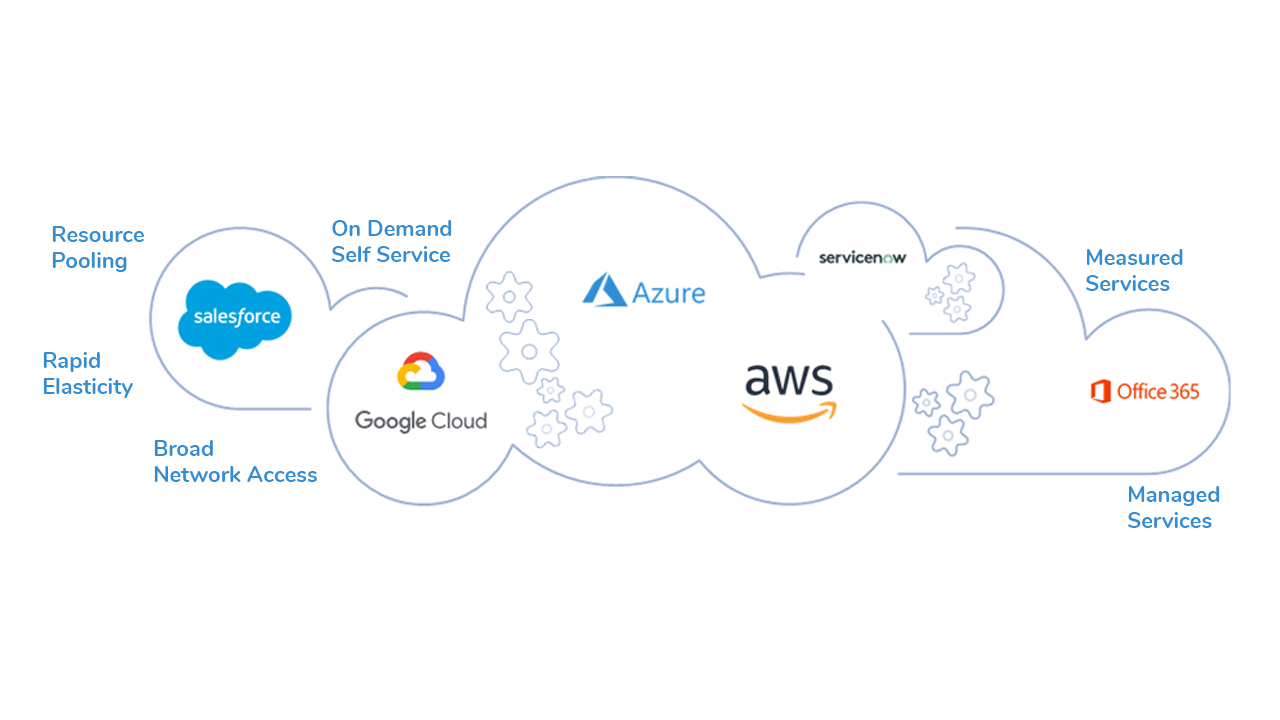Newest Cloud Services Press Release: Technologies and Market Updates
Wiki Article
Achieve Seamless Scalability With Cloud Solutions
In the ever-evolving landscape of cloud solutions, accomplishing smooth scalability stands as a foundation for contemporary organizations looking for to remain competitive and adaptable. The mission for smooth scalability with cloud services introduces a world of possibilities for those prepared to welcome the transformative power of vibrant source monitoring.Benefits of Cloud Scalability
Cloud scalability offers organizations the adaptability to dynamically readjust resources based on demand, making sure ideal efficiency and cost performance. Furthermore, cloud scalability promotes advancement and testing by enabling companies to easily examine new concepts and scale them as required. Inevitably, the advantages of cloud scalability extend past cost savings to include improved performance, dexterity, and innovation.Key Features for Scaling
Effective scaling in cloud services counts on essential features that allow companies to change resources dynamically based on demand. Another crucial attribute is scalability, making it possible for systems to deal with raised work by adding resources effortlessly. In general, these vital features jointly equip organizations to attain seamless scalability in cloud solutions.Applying Auto-Scaling Approaches
To efficiently optimize source allocation and adapt to differing workloads, organizations should tactically execute auto-scaling methods in their cloud solutions facilities. Auto-scaling permits systems to automatically readjust the variety of compute resources based on real-time need. There are various auto-scaling approaches that companies can use, such as anticipating scaling, which utilizes historical data to forecast future resource requirements, and responsive scaling, which reacts to existing work modifications.
Ideal Practices for Scalability
For companies intending to enhance their scalability in cloud services, applying finest practices is essential for optimum performance and resource monitoring. One secret ideal practice is designing applications with a microservices design. This method breaks down applications right into smaller sized, independent services that can be deployed, upgraded, and scaled individually, permitting better versatility and scalability.An additional crucial practice is using containerization innovation, such as Docker or Kubernetes. Containers allow the product packaging of applications and their reliances right into separated systems, making it easier to scale parts independently and deploy them continually throughout various environments.
In addition, carrying out automated implementation and infrastructure as code (IaC) can streamline scalability initiatives (linkdaddy cloud services). Automation devices like Terraform or Ansible aid in provisioning and managing sources effectively, minimizing manual errors and making it possible for fast scalability
Furthermore, keeping track of efficiency metrics, establishing up alerts, and carrying out normal capability planning are vital methods to make certain proactive scalability management. By sticking to these best methods, organizations can attain seamless scalability in their cloud solutions while enhancing efficiency and source application.
Tracking Performance Metrics
When examining the efficiency of cloud services scalability, very closely keeping track of efficiency metrics is vital for ensuring ideal performance and source allocation. By continuously tracking vital performance indicators (KPIs) such as response times, latency, source, and he has a good point throughput application, companies can acquire useful insights into the wellness and efficiency of their cloud framework. Keeping track of performance metrics permits the early discovery of potential bottlenecks or concerns that can affect scalability, making it possible for positive steps to be taken to address them before they intensify.

Conclusion
Finally, attaining seamless scalability with cloud services is crucial for organizations to maximize efficiency, enhance innovation, and maintain high efficiency degrees during peak times. By leveraging the advantages of cloud scalability, implementing auto-scaling techniques, making use of crucial features such as elasticity and automation, and following ideal techniques like application layout and performance monitoring, services can effectively scale their systems while taking full advantage of source use and efficiency.The quest for smooth scalability with cloud solutions unveils a world of opportunities for those ready to embrace the transformative power of vibrant source administration.
Cloud scalability provides companies the versatility to dynamically readjust sources based on demand, making sure optimal performance and click to read expense performance. Another key attribute is scalability, making it possible for systems to manage enhanced work by including sources perfectly.For organizations intending to enhance their scalability in cloud solutions, applying ideal practices is crucial for optimum performance and resource administration.When assessing the efficiency of cloud solutions scalability, closely checking efficiency metrics is crucial for ensuring ideal capability and resource allocation.
Report this wiki page